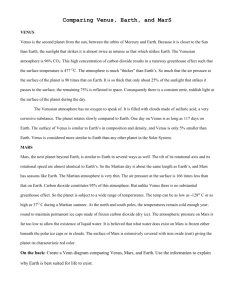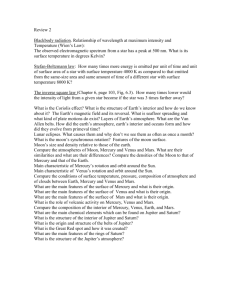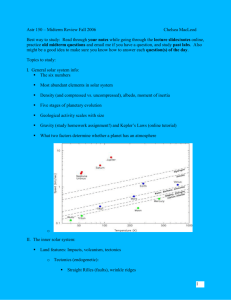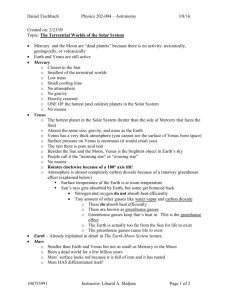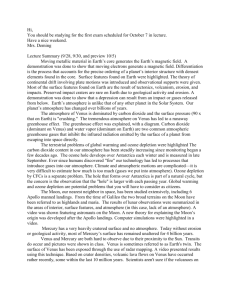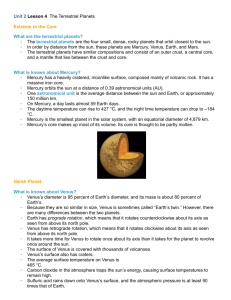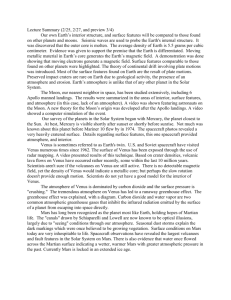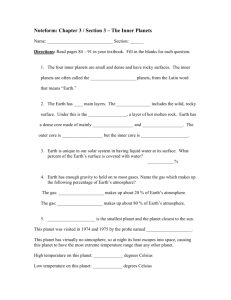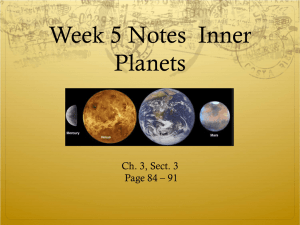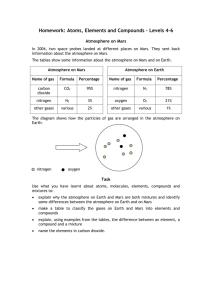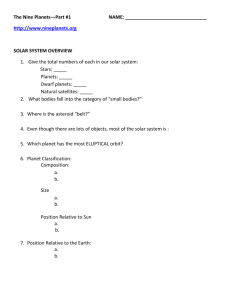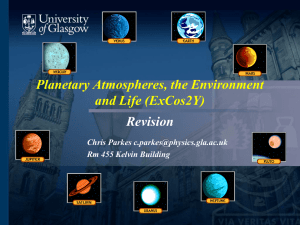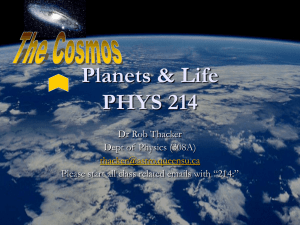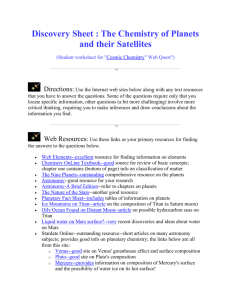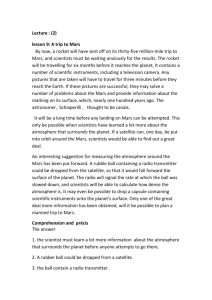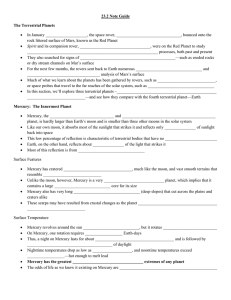Unit 3 Review Answers
advertisement
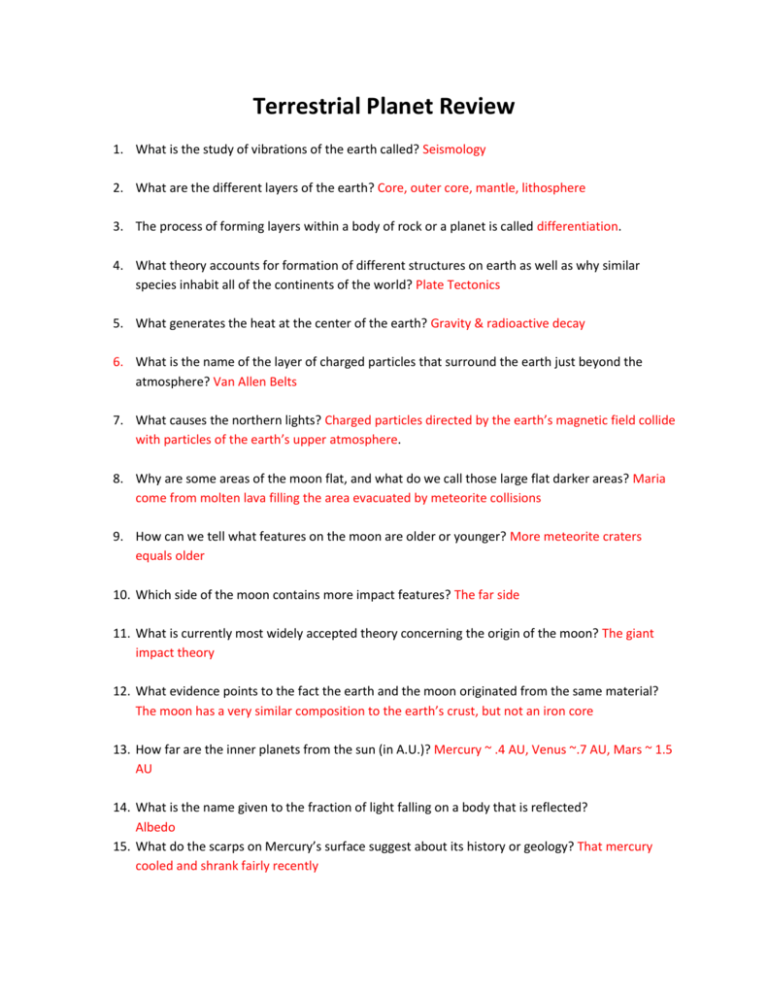
Terrestrial Planet Review 1. What is the study of vibrations of the earth called? Seismology 2. What are the different layers of the earth? Core, outer core, mantle, lithosphere 3. The process of forming layers within a body of rock or a planet is called differentiation. 4. What theory accounts for formation of different structures on earth as well as why similar species inhabit all of the continents of the world? Plate Tectonics 5. What generates the heat at the center of the earth? Gravity & radioactive decay 6. What is the name of the layer of charged particles that surround the earth just beyond the atmosphere? Van Allen Belts 7. What causes the northern lights? Charged particles directed by the earth’s magnetic field collide with particles of the earth’s upper atmosphere. 8. Why are some areas of the moon flat, and what do we call those large flat darker areas? Maria come from molten lava filling the area evacuated by meteorite collisions 9. How can we tell what features on the moon are older or younger? More meteorite craters equals older 10. Which side of the moon contains more impact features? The far side 11. What is currently most widely accepted theory concerning the origin of the moon? The giant impact theory 12. What evidence points to the fact the earth and the moon originated from the same material? The moon has a very similar composition to the earth’s crust, but not an iron core 13. How far are the inner planets from the sun (in A.U.)? Mercury ~ .4 AU, Venus ~.7 AU, Mars ~ 1.5 AU 14. What is the name given to the fraction of light falling on a body that is reflected? Albedo 15. What do the scarps on Mercury’s surface suggest about its history or geology? That mercury cooled and shrank fairly recently 16. What is the most abundant compound in the Venusian atmosphere? Carbon Dioxide 17. What makes Venus the hottest planet in our solar system? Greenhouse effect 18. We can’t see the surface of Venus because of the thick clouds and atmosphere, how do we know what it looks like? Radar mapping 19. What indicates that Venus is still volcanically active? Lots of sulfuric acid and carbon dioxide in the atmosphere 20. How big is Mars in relation to the Earth? Diameter is about 50% 21. How long is a Martian year? 687 days 22. Why do Venus and mars have so much more carbon dioxide in their atmosphere than the earth? Plant life has scrubbed our atmosphere of much of its CO2 23. What are the Martian ice caps composed of? Water ice and dry ice (carbon dioxide ice) 24. What features on mars indicate that liquid water once flowed there? Erosion patterns and lake basins 25. What 1996 discovery led some scientists to argue that life once existed on Mars? Meteorite on Antarctica from mars. 26. Why do scientists think that mars interior must be substantially different than that of the Earth’s? Mars is not nearly as dense as Earth 27. What did How the Earth was Made propose was responsible for the 2 mass extinctions in Earth’s geologic history? 1) Huge climate change caused by the blocking of ocean currents and 2) a big ol’ meteor combined with increased volcanic activity


